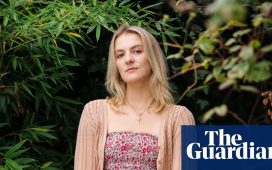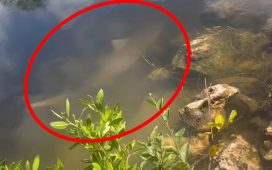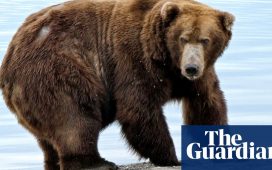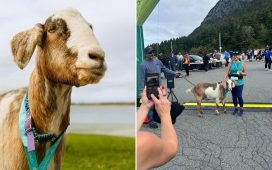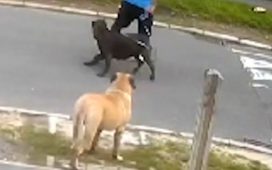On a clear August morning, Skookum John manoeuvres his fishing boat, Sweet Marie, out of the Tofino harbour and into the deep blue waters of Clayoquot Sound on Canada’s west coast.
On shore, the late summer sun shines on visitors from all over the world who have flocked to the bustling fishing town on Vancouver Island, where they wander in and out of surf shops, art galleries and restaurants and pile into small boats in the hope of glimpsing orca, humpback and grey whales.
“You’ll never find this anywhere in the world,” John says, gesturing through the Sweet Marie’s window at the mosaic of islands and mountains, cloaked in thick green rainforests, that form part of the Clayoquot Sound Unesco biosphere reserve.
The Sweet Marie motors deeper into Clayoquot Sound, past a web of inviting channels and inlets, and cruises past a raft of sea otters resting in the gentle swells. Hunted nearly to extinction, sea otters are one of the celebrated species found in the reserve, along with sea lions, seals, wild salmon and bald eagles.
John, a member of Ahousaht First Nation, makes his living on the water, where he helps train coast guard members in marine rescue, ferries passengers to islands and hot springs and takes visitors on whale watching tours. Today, he is taking members of Clayoquot Action, a conservation group focused on protecting wild salmon, to the site of one of the area’s more controversial industries: open-net pen salmon farms.
Dan Lewis, the co-founder and executive director of Clayoquot Action, is incredulous that industrial salmon farming is allowed to take place in a globally recognised protected area. “Why are we doing this here?” he says, gesturing at the rich waters, home to a colourful array of sea life that includes giant rock scallops, tufted anemones in green, pink and white, dark green kelp forests, red sea urchins and purple-tinged Dungeness crabs.
Clayoquot Sound is also home to some of the last 60 salmon farms left on North America’s west coast. For decades, as many as 100 farms in Canadian waters have raised mostly non-native Atlantic salmon in pens in the Pacific Ocean.
But now the salmon farming industry, blamed for contributing to the collapse of wild salmon stocks, faces an uncertain future. In June, the Canadian government announced a ban on open-net pen salmon farming from coastal waters in July 2029, as part of a commitment “to protecting wild salmon and promoting more sustainable aquaculture practices”.
Concerns about the industry’s impact on wild salmon played a leading role in the closure of about three dozen farms in British Columbia over the past seven years, after Clayoquot Action and other groups documented sea lice outbreaks and other diseases in farmed fish, including at farms along migration routes for wild salmon.
The decision to ban all remaining British Columbia farms, lauded by conservation groups and wild salmon advocates, has been soundly criticised by Canada’s salmon farming industry, which largely consists of multinational corporations that farm salmon around the world, including in the UK. The industry says moving salmon farming to closed containment systems on land or in the water, as the government suggests, is not logistically feasible and would be prohibitively expensive.
For John, who has been campaigning against salmon farms since 2015, the Canadian government’s new 2029 deadline may just be an empty promise, after its earlier, unfulfilled commitment to remove open-net pen salmon farms by 2025. “I won’t believe anything that the government says until I see it happen,” he says, as the Sweet Marie slowly circles a floating salmon farm in a small bay, barely a stone’s throw from the seaweed-strewn shore.
John’s scepticism is shared by Hasheukumiss, hereditary chief of the Ahousaht Nation and president of the Maaqutusiis Hahoulthee Stewardship Society, which manages economic development for the nation. But the two men have very different perspectives on the salmon farming industry, mirroring broader divisions about whether open-net pen farms should be allowed to operate in Canadian waters.
In 2010, the Ahousaht Nation signed an agreement allowing Cermaq Global, a Mitsubishi subsidiary that also farms salmon and trout in Norway and Chile, to operate in its territorial waters. The agreement was subsequently renewed with changes, according to Hasheukumiss, also known as Richard George.
“One of the things that I wanted to address was the environmental concerns because we are the true stewards of our back yard,” he says. “It was the sea lice and the pathogens that were the biggest concerns we had.”
According to Hasheukumiss, Cermaq was responsive and worked with the nation to address that concern.
Hasheukumiss’ assessment of the Canadian government’s handling of fish farms is less rosy. Since he inherited his title in 2020, he says he has discussed the issue with three different cabinet ministers, yet has seen little in the way of consultation with his nation.
A five-year transition away from open-net pen farms is not a realistic timeframe for the industry, he says. “In five years, there is no way this industry – or any industry – can go to fully contained systems.”
As the Sweet Marie noses slowly towards a rectangle of floating walkways bordered by black net fencing, John stands and slips the engine into neutral. He calls out to one of the salmon-farm workers, jokingly asking why he’s pretending to be busy. It’s his nephew, who recently started working at the Cermaq farm, one of 13 facilities in Clayoquot Sound that employ about 20 Ahousaht members.
The two chat while Lewis stands at the Sweet Marie’s bow, peering through the nets to get a view into the pens, as part of the group’s regular monitoring of the industry’s operations.
At an unstocked salmon farm nearby, the Cermaq’s delousing boat, Aqua Service, towers over the Sweet Marie from its berth. The vessel has a large rear deck fitted with a patented delousing system, which pulls fish from the pens and uses seawater to flush off the lice. The treatment process takes just two tenths of a second, aiming to reduce stress and fish deaths.
In Ahousaht territory, Cermaq has been experimenting with technology to reduce the industry’s impact on wild salmon. A semi-closed containment system – consisting of a semi-permeable bag that stretches 25 metres below the water – is used to raise young salmon smolts while reducing their exposure to sea lice. The bag draws water from deep in the water column where sea lice can’t survive.
Fewer sea lice on the farmed smolts make it less likely wild salmon swimming past the farms will pick up the parasites. After a year, the young salmon are moved to open-net pens to grow to marketable size.
The semi-closed containment system Cermaq is trialling is expensive – costing C$20,000 (£11,000) a month in diesel alone. Brian Kingzett, executive director of the BC Salmon Farmers Association, representing Cermaq and other companies, says there is little appetite to make big investments and navigate the time-consuming licensing process for new technology, especially with the future of the industry in question.
“There are lots of reasons why farmers want to go to closed containment for that first year; Cermaq has been trying to do it,” he says. “It took them six years to get a licence. We only have a five-year window.”
Kingzett says the industry was “completely gobsmacked” by the Canadian government’s decision to remove open-net pen salmon farms by 2029, calling closed containment “an unfeasible option”.
Setting up a medium-sized land-based salmon farm, capable of producing 5,000 tonnes of fish a year, could cost C$1.8bn (£1bn), according to a 2022 report commissioned by the British Columbia government. The report’s authors said it was difficult to estimate the costs of setting up large-scale farms because there are no land-based salmon farms in the world that are reliably producing large amounts of fish.
BC’s first land-based salmon farm, Kuterra, is now raising steelhead trout, after achieving barely one-third of its production target, according to the BC government report. Another land-based venture, West Creek, has stopped farming salmon altogether. And on the other side of the country on the Atlantic coast, a land-based salmon farm, Sustainable Blue, suffered a mass die-off, reportedly because of an equipment malfunction, and is now in receivership.
But Lewis says closed containment systems on land are the only option if the Canadian government is serious about protecting wild salmon stocks.
“To our understanding, there is nothing that can actually have zero discharge that’s in the water,” Lewis says. “What we want to see in the next five years is all the farms come out of the water. We don’t believe there are any in-water solutions.”
Kingzett says closing down open-net pen salmon farms will harm small coastal communities. Any land-based containment systems will need to be close to plentiful power and water supplies, not to mention customers, he says.
If BC’s salmon farms disappear, Kingzett is confident farmed salmon will still be sold in the country’s supermarkets – but it will come from places such as Chile and Norway.
Inside the Sweet Marie’s cabin, John has placed a sticker with the hashtag #FishFarmsOut near the helm. He is eager for the industry to leave Ahousaht territory, even if it means losing the money fish farming has brought to the community.
“Wealth isn’t money,” he says. “What we have in our territory, what we have in the ocean, what we have in the air, that’s wealth.”
-
This report is a collaboration with The Narwhal, anonline magazine that that reports on environmental issues in Canada


